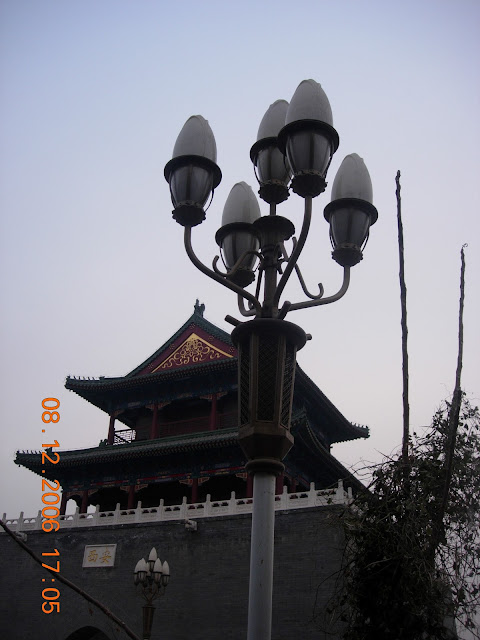All photos shared in this entry was taken from my apartment balcony in Platinum Park, Clifton in 2009. It was a breathtaking scenery of Abdullah Shah Ghazi Shrine overseeing the Arabian Sea during sunrise or sunset with clowds of birds as a background. A cricket stadium seen in the photo seated just accross the apartment. Clifton area is conveniently populous area where the shopping mall, Park Tower and Bagh Ibne Qasim, the Largest Park in South Asia are located.Clifton is an affluent neighbourhood located in the Saddar Town. Clifton is the place where we can get a good food, shopping and recreational areas and a book shop to hang out at. These are the area where my family and my friends used to visit in our free time.
Abdullah Shah Ghazi is considered to be patron saint of Karachi. He is widely revered in Pakistan.
There are 2 version of his story, the 1st version states that Abdullah Shah Ghazi was Syed Abu Muhammad Abdullah Al Ishtar from the lineage of the Prophet Muhammad from the linage of Hasan Ibne Ali Ibne Abu Talib. According to historian Suhail Zaheer Lari, he was the son of Muhammad al-Nafs al-Zakiyya. He was born in Medina in 720 and arrived in Sindh in 760 as a merchant where he brought with him a large number of horses purchased from Kufa, Iraq. He was given a warm welcome as he belonged to a saadat family, the noblest in Islam. The 2nd version has been given by, Dr. Umar Bin Muhammad Daudpota, who proposes that the real name of Abdullah Shah was General Abdulla bin Nabhan. Who along with another senior commander, Badil bin Tuhafa, had launched a military expedition against the local ruler, Raja Dahir.
While Muhammad bin Qasim (sent by Ummayad prince) pressed on to topple Raja Dahir and conquer, Abdullah Shah continued to live and preach Islam in Sindh. Beside preaching, Abdullah Shah was very fond of hunting. In his passion for hunting, Abdullah used to go far from the base and while he had was far enough away he was intercepted by the enemy. Out-numbered, he preferred to fight rather than submitting and it is because of this display of valor he was given the title of "Ghazi" meaning "victorious". He died in 773 near the sea while dressed in war attire. He was buried atop a hill in Karachi, where his remains remain.
His shrine in
Karachi is dated back to 1400 years ago and his brother, Misry Shah, who is also
buried along the coastline in Karachi, is also remembered as a saint. Many people claim
to have been granted their wishes at the shrine and it is the center for people
who throng the shrine all year round. Every year marks the Urs festival at the
shrine for 3 days (dates: 20-22 Dhu al-Hijjah - 12th month of the Islamic
calendar), marking the anniversary of Abdullah Shah Ghazi. A famous myth about
the mazar is that Karachi never had a tropical disaster in a thousand year
because of the shrine's blessing.
Another important landmark of Clifton are the 3 swords monument built in 1970 within the neighbourhood, on the main Clifton road. The first 1, seen in below photo is "Aik Talwar", means 1 sword. Further down, near roundabout to Iran Embassy is "Do Talwar" or 2 sword and the last sword or "Tin Talwar" is located at Chowrangi at the end of Clifton cantonment.
Among all places in Clifton, I don't really like to enter into Clifton beach as the smells (especially during winter time) was very unpleasant to me. I will try to write as many as possible, all the places in Karachi once the main obligated travelogue was completed. Keep on reading and thank you for visiting my blog. Cheers!

































































